November 7
Marie Curie
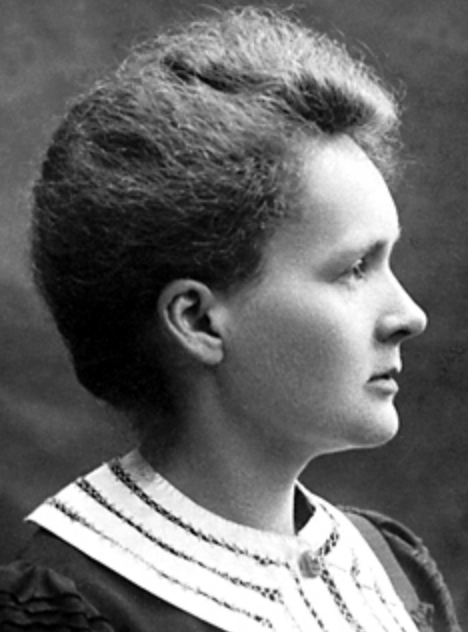
On this date in 1867, two-time Nobel Prize winner Maria Salomea Curie, née Sklodowska, was born in Warsaw, Poland. Her father was an atheist and her mother was Catholic. The deaths of her mother and sister caused her to abandon Catholicism and become agnostic as a teen. (Marie Curie by Robert Reid, 1978.)
Curie moved to Paris to study at the Sorbonne in 1891, got her degree in math and married Pierre Curie in a civil ceremony. The couple had two daughters, Irène and Ève. Curie broke many barriers for her sex, becoming the first European woman to earn a science doctorate and the first to be awarded a Nobel Prize.
She and Pierre and physicist Henri Becquerel were jointly awarded the 1903 Nobel Prize in Physics “for their joint researches on the radiation phenomena discovered by Professor Henri Becquerel.” She coined the very word “radioactive.” She won the 1911 Nobel Prize in Chemistry for “the discovery of the elements radium and polonium, by the isolation of radium and the study of the nature and compounds of this remarkable element.”
Pierre died tragically in 1906 at age 46 when he slipped in the street and a horse-drawn cart ran over his head. Curie took over his professorship of general physics at the University of Paris, winning another first for women. She was also the first person and only woman to win a Nobel Prize twice and the only person to win a Nobel in two different scientific fields.
Yet in 1911 the French Academy of Sciences failed in a close vote to elect her as a member. Before the election, she was vilified by the right-wing press as a foreigner and atheist. Not until 1962 would a woman, ironically a doctoral student of Curie’s, be elected.
She became director of the Curie Laboratory in the Radium Institute of the University of Paris in 1914 and spent much of the rest of her life pursuing the goal of “easing human suffering.” Her daughter Irène and her husband Frédéric Joliot-Curie were jointly awarded the 1935 Nobel Prize for Physics for synthesizing new elements.
Her daughter Ève in her memoir “Mme. Curie” (1937) described all family members as rationalists. Curie wrote in 1923 that Eugène Curie, her physician father-in-law, was “a free thinker and an anticlerical, he did not have his sons baptized, nor did he have them practice any form of religion.”
Curie died at age 66 of aplastic anemia attributed to radiation exposure. In 1995 she became the first woman to be entombed on her own merits in the Panthéon in Paris. (D. 1934)
“Pierre belonged to no religion and I did not practice any.”— Marie Curie, "Pierre Curie" (1923)
Albert Camus
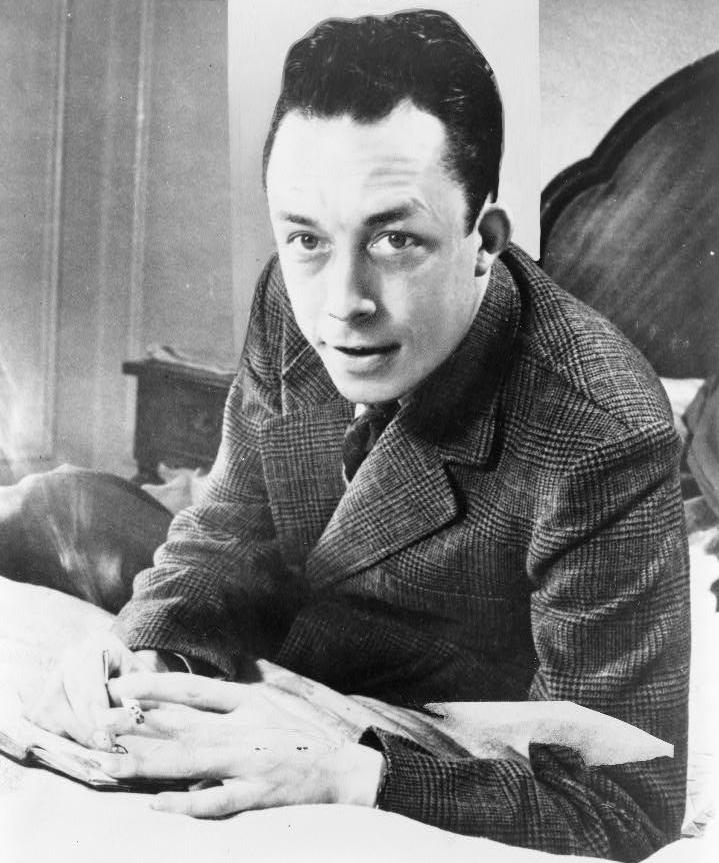
On this date in 1913, Nobel Prize-winning writer Albert Camus was born in Mondovi, Algeria, to immigrant parents: a French father and a Spanish mother. After his father died during World War I in 1914, his family was left in extreme poverty. He excelled in athletics and academics and entered the University of Algiers to study, although a serious bout of tuberculosis cut short his studies. He joined the anti-fascist movement in 1934 but was soon expelled from the Algerian Communist Party as a “Trotskyist.”
Camus wrote for a socialist paper in the late 1930s, chronicling the plight of the poor. In 1940 he went to Paris, fled after the German invasion, returned to Algeria, was advised to leave and at age 25 found himself back in Paris. Camus joined the Resistance and after liberation was a columnist for the newspaper Combat.
His major writings include the essay “The Myth of Sisyphus” 1942, L’Etranger (The Stranger) 1942, La Peste (The Plague) 1947, which includes a priest character who insists a plague was sent as punishment from God, La Chute (The Fall) 1956 and L’Exile et le Royaume (Exile and the Kingdom) 1957, the year he won the Nobel Prize in Literature.
Camus was a pioneer of absurdist philosophy and literature and became a nonbeliever after being raised Catholic. He married Simone Hié in 1934. Soon after they divorced in 1940, he married pianist and mathematician Francine Faure, who gave birth to twins Catherine and Jean in 1945. Camus died at age 46 in an auto accident. (D. 1960)
“[Camus’] anti-Christianity is one of the most absolute of modern times.”
— Martin Seymour-Smith, "Who's Who in Twentieth-Century Literature" (1976)
Andrew Dickson White

On this date in 1832, Andrew Dickson White was born in Homer, N.Y. He graduated from Yale University in 1853 with a B.A. and returned for his M.A. in history in 1856. He became a history professor at the University of Michigan in 1856 and was elected a New York state senator in 1864. White co-founded Cornell University with Ezra Cornell and became its first president (1866-85). White was also the first president of the American Historical Association (1884-86), president of the American delegation to the Hague Peace Conference in 1899 and U.S. ambassador to Germany (1897-1902).
In 1859 he married Mary Outwater, who died in 1887. White married Helen Magill in 1890. He had four children.
Upon founding Cornell, White announced that he wanted the college to be “an asylum for Science — where truth shall be sought for truth’s sake, not stretched or cut exactly to fit Revealed Religion.” (God and Nature by David Lindberg and Ronald Numbers, 1986) He strongly supported science and secularism, lecturing about “The Battle-Fields of Science,” which he describes in his autobiography as a lecture about “how, in the supposed interest of religion, earnest and excellent men, for many ages and in many countries, had bitterly opposed various advances in science and in education.” (Autobiography of Andrew Dickson White Vol. 1, 1904)
In 1896 White wrote A History of the Warfare of Science and Theology in Christendom, which further examined the tumultuous relationship between science and religion. He wrote, “In all modern history, interference with science in the supposed interest of religion, no matter how conscientious such interference may have been, has resulted in the direst evils both to religion and science.” (D. 1918)
“I simply try to aid in letting the light of historical truth into that decaying mass of outworn thought which attaches the modern world to mediaeval conceptions of Christianity.”
— White, "A History of the Warfare of Science With Theology in Christendom" (1896)
Culbert Olson
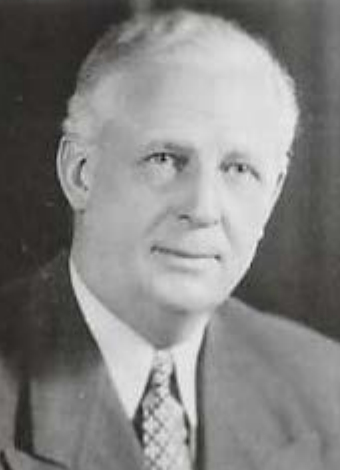
On this date in 1876, Culbert Levy Olson, future California governor, was born in Fillmore, Utah. His parents were Mormon but Olson left the church as a teen “after deciding that Joseph Smith was an imposter and that his revelations didn’t make any rational sense,” according to his granddaughter Debra Deane Olson. He came to atheism after listening to lectures by Robert Green Ingersoll.
He attended Brigham Young University in Provo, graduating at age 19, then became associate city editor of the Daily Ogden Standard before moving to Washington, D.C., where he did secretarial work for congressional members. After returning to school to get his law degree, he put out his shingle in 1901 in Salt Lake City, where he met and married Kate Jeremy. They had three children.
In 1916 he was elected to the Utah State Senate. After serving four years, he moved to Los Angeles to practice law. He campaigned in 1924 for Robert M. La Follette, the Progressive Party presidential candidate. California. He was elected to the California Senate in 1934 and in 1938 became the state’s first Democratic governor since 1896.
At his inauguration he put his left hand in his pocket instead of on a bible while swearing his oath of office. “I just told the member of the Supreme Court who came to swear me in as governor that there was no use to ask me to say ‘So help me God’ because God couldn’t help me at all, and that there isn’t any such person, and I will have to just say, ‘I will affirm.’ ”
After his term as governor (he lost a reelection bid), he campaigned against the proposal to make “In God We Trust” the official motto of California. “Such a motto is untrue,” he said. “We don’t trust in God. … The harm is that it is a violation of the First Amendment to the Constitution.”
An activist with the United Secularists of America, he became the president of the organization in 1957 and remained president until his death on April 13, 1962. In 1959 the Commonwealth Club of California cancelled a speech Olson was scheduled to give on the subject of separation of church and state. In that prepared speech Olson wrote, “No god has ever shown himself. The thousands of gods that man has worshipped are myths born of his fears and his imaginations.”
Debra Deane Olson and Dr. Craig Wilkinson spoke about Governor Olson at FFRF’s 2018 national convention in San Francisco while receiving a Courage to Tell the Truth Award in his honor. Their speech is here. (D. 1962)
“The emancipation of the mind from religious superstition is as essential to the progress of civilization as is emancipation from physical slavery.”
— Olson, in 1961 at age 84 after being asked if religion promoted social progress.
Joni Mitchell
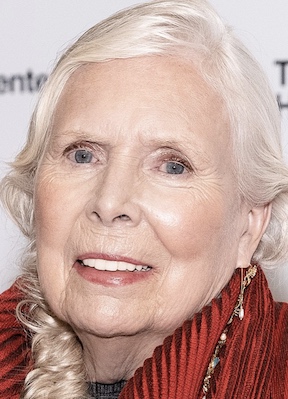
On this date in 1943, singer-songwriter Roberta Joan “Joni” Mitchell (née Anderson) was born in Fort Macleod, Alberta, Canada, to Bill and Myrtle Anderson, a grocer and schoolteacher. She contracted polio when she was 10, later reflecting, “A great sorrow hath humanized me.” She recovered but was left with complications. After a year at the Alberta College of Art in Calgary, she moved to Toronto to become a folk singer.
Mitchell got pregnant in 1964 and gave her daughter up for adoption. Her boyfriend had left her when she was three months pregnant and broke. (She finally reunited with her daughter, renamed Kilauren Gibb from Kelly Dale Anderson, in 1997.) She left Canada for the first time in 1965, going with American folk singer Chuck Mitchell to the U.S., where they started playing music together. They married in June 1965 when she was 21 and divorced in 1967.
Mitchell moved to New York, then to Los Angeles, soon achieving success and fame. As of this writing in 2019, she has released 19 studio albums and won nine Grammy awards. Her song “Both Sides Now” (“It’s life’s illusions I recall / I really don’t know life at all”) was recorded by Judy Collins in 1967 and became a top-10 hit.
Her album “Blue” (1971) soon became a top-seller. Her songs have been covered by numerous artists. She was ranked 42nd on Rolling Stone’s “100 greatest singers” list in 2008 and in 2015 was ranked ninth on its list of the 100 Greatest Songwriters of All Time.
In her song “The Priest,” Mitchell reflects on her ambivalence toward religion. “The Magdalene Laundries” laments “Fallen women sentenced into dreamless drudgery.” “Holy War” condemns war waged in the name of religion. The title song in “Shine,” her last album (2007) attacks the Catholic Church: “Shine on the Catholic Church / And the prisons that it owns / Shine on all the churches / They all love less and less”).
Mitchell has been confined to a wheelchair since suffering a brain aneurysm in 2015, which limited her public appearances. She performed for the first time at the 66th Annual Grammy Awards in 2024 and later that year with Brandi Carlile, Marcus Mumford, Annie Lennox and numerous supporting musicians.
PHOTO: Mitchell at the 2021 Kennedy Center Honors Medallion Ceremony at the Library of Congress; public domain photo by Shawn Miller/Library of Congress.
“I’m interested in the prophets of all religions, but the religions themselves don’t make any sense to me.”
— Mitchell interview, "Fresh Air with Terry Gross" (Oct. 20, 2004)
Sasha Sagan
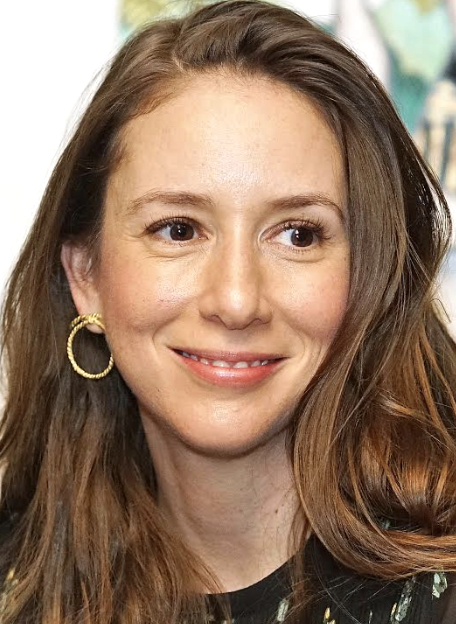
On this date in 1982, writer and producer/editor Alexandra Rachel “Sasha” Druyan Sagan was born to Ann Druyan and Carl Sagan. She grew up in Ithaca, N.Y., where her father was a professor of astronomy and space sciences at Cornell University and her mother was a science communicator who co-wrote the 1980 PBS documentary series “Cosmos” hosted by her husband. Sagan’s dad held up little Sasha (a Russian diminutive for Alexandra) and said, “Welcome to the planet Earth.”
Sagan was raised in a secular Jewish home “guided by the principles and the values that my parents instilled in me — the idea that there is that wonder, that spine-tingling thrill in that which can be supported by evidence.” (Space.com interview, Oct. 28, 2019)
“My parents taught me that what sets science apart from other philosophies is that science has an ‘error correcting mechanism.’ If you disprove the most celebrated, deeply held beliefs, you’ve done something great in science. If something can’t stand up to scrutiny, we have to let go of it.” (Amy Poehler’s Smart Girls, Nov. 13, 2019)
After majoring in dramatic literature, she graduated from New York University and worked as a writer, TV producer, filmmaker and editor in New York City, Boston and London. Her essays and interviews have appeared in New York magazine, Literary Hub, Mashable.com, O, The Oprah Magazine and elsewhere. She is also a contributing editor for the British fashion magazine The Violet Book. Her short film “Bastard,” co-written and produced with Kirsten Dunst, was screened at the Tribeca Film Festival and was one of two chosen to close the 2010 Cannes Film Festival’s Critics Week ceremony.
“The defining change of my life was the death of my father [at age 62],” Sagan wrote in 2015. “I was 14. For years I would dream he’d returned with an elaborate explanation for where he’d been, then I’d wake up crushed. The loss of his light — the full impact of his absence — took years to reach me.”
She and her fiancé Jonathan Noel, whom she’d known since middle school, chose to wed in 2013 in a Cornell art museum — a treasured place where father and daughter had loved visiting together. It was also where his memorial service was held in 1996. Sasha and Jon have a daughter, Helena, and as of this writing in 2021 live in Boston.
The year 2013 was also when the Seth MacFarlane Collection of the Carl Sagan and Ann Druyan Archive at the Library of Congress opened to the public. The freethinking MacFarlane was executive producer with Druyan of the updated “Cosmos” series “A Spacetime Odyssey” that debuted the next year.
Sagan published her book For Small Creatures Such as We: Rituals for Finding Meaning in Our Unlikely World in 2019. The title stems from a line her father wrote in his 1985 novel Contact: “For small creatures such as we the vastness is bearable only through love.”
Of traditions, she said, “Those of us who don’t believe, we still have to have weddings, we still have to have funerals, we still have to mark time, we still want to celebrate. I sort of started thinking about how would I create this framework for a child who would be growing up in a secular home.” (Space.com, ibid.)
She has many people in her life who are religious, some devoutly, which doesn’t lessen her love for them. In For Small Creatures she wrote, “For me the biggest drawback to being secular is the lack of a shared culture. I can live without an afterlife, I can live without a god. But not without celebrations, not without community, not without ritual.”
What Sagan most admires about organized religion “is the social expectation to do good works. And I think that for those of us who do not believe there is a moral safety net or that everything happens for a reason, we must also realize it’s our duty to put the work in to make the world more just.” (Spectrum Magazine, Nov. 12, 2019)
She has been a regular guest on FFRF’s Freethought Radio and Freethought Matters television programs.
“My parents raised me to be skeptical but not cynical.”
“My hope is to teach my daughter to face our reality as we understand it through science and find the astounding exquisiteness in it.”
— Sasha Sagan YouTube remarks (Oct. 23, 2019)
